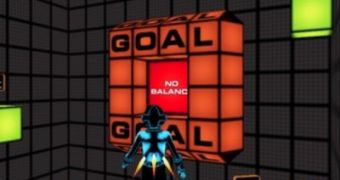It seems like the world is getting used to having increasing obesity rates in youngsters, since people say that it's hard to convince kids to eat better and exercise more.
There are a few elements that can lower the risk of obesity, like fruit and vegetable (FV) consumption or increasing water intake and physical activity.
But it seems that not enough responsible adults have the power to get kids to eat healthy or run and play with their friends, so a team of researchers thought that video games designed to encourage kids to adopt healthy behaviors, might do the job.
Actually only two video games - “Escape from Diab” (Diab) and “Nanoswarm: Invasion from Inner Space” (Nanoswarm), showed some positive results.
These epic video games are specially designed to lower the risks of type 2 diabetes and obesity by changing the kids' diet and physical activity behaviors.
The researchers conducted a randomized clinical trial on 153 children, aged 10 to 12, which were divided into two groups: 103 children were part of a treatment group, and the other 50 were in a control group.
Only 133 subjects gave researchers complete data on themselves.
The treatment group first played Diab and then Nanoswarm, while the control group played diet and physical-activity knowledge-based games on popular websites.
The two groups were assessed at the beginning of the trial, right after Diab, immediately after Nanoswarm, and once again, two months later.
Their height, weight, waist size, and triceps skin-fold thickness were measured, and the physical activity was monitored for at least 4 days by accelerometer-based data from every child at every assessment.
Also, food intake was measured using 24 hour dietary recalls conducted by registered dietitians, AlphaGalileo reports.
The results showed that kids playing the two epic video games increased their Fv intake by nearly 2/3 serving a day, but their water consumption or moderate to vigorous activity levels remained unchanged.
And even if there was a certain progress, FV, water consumption and physical activity stayed below the minimum recommendations.
The two video games were designed by Archimage, Inc., and funded by a Small Business Initiative Research Grant from the National Institute of Diabetes and Digestive and Kidney Diseases of the National Institutes of Health.
Diab and Nanoswarm are based on social cognitive, self-determination, and persuasion theories, and, according to lead investigator Tom Baranowski, PhD, Professor of Pediatrics, US Department of Agriculture/Agricultural Research Service supported Children’s Nutrition Research Center, Baylor College of Medicine, they “were designed as epic video game adventures, comparable to commercial quality video games.
“These games incorporated a broad diversity of behavior change procedures woven in and around engrossing stories.
“The games motivated players to substantially improve diet behaviors,” he added.
“Serious video games hold promise, but their effectiveness and mechanisms of change among youth need to be more thoroughly investigated.”
This study will be published in the January 2011 issue of the American Journal of Preventive Medicine.
Take a quick peak at Nanoswarm:

 14 DAY TRIAL //
14 DAY TRIAL //